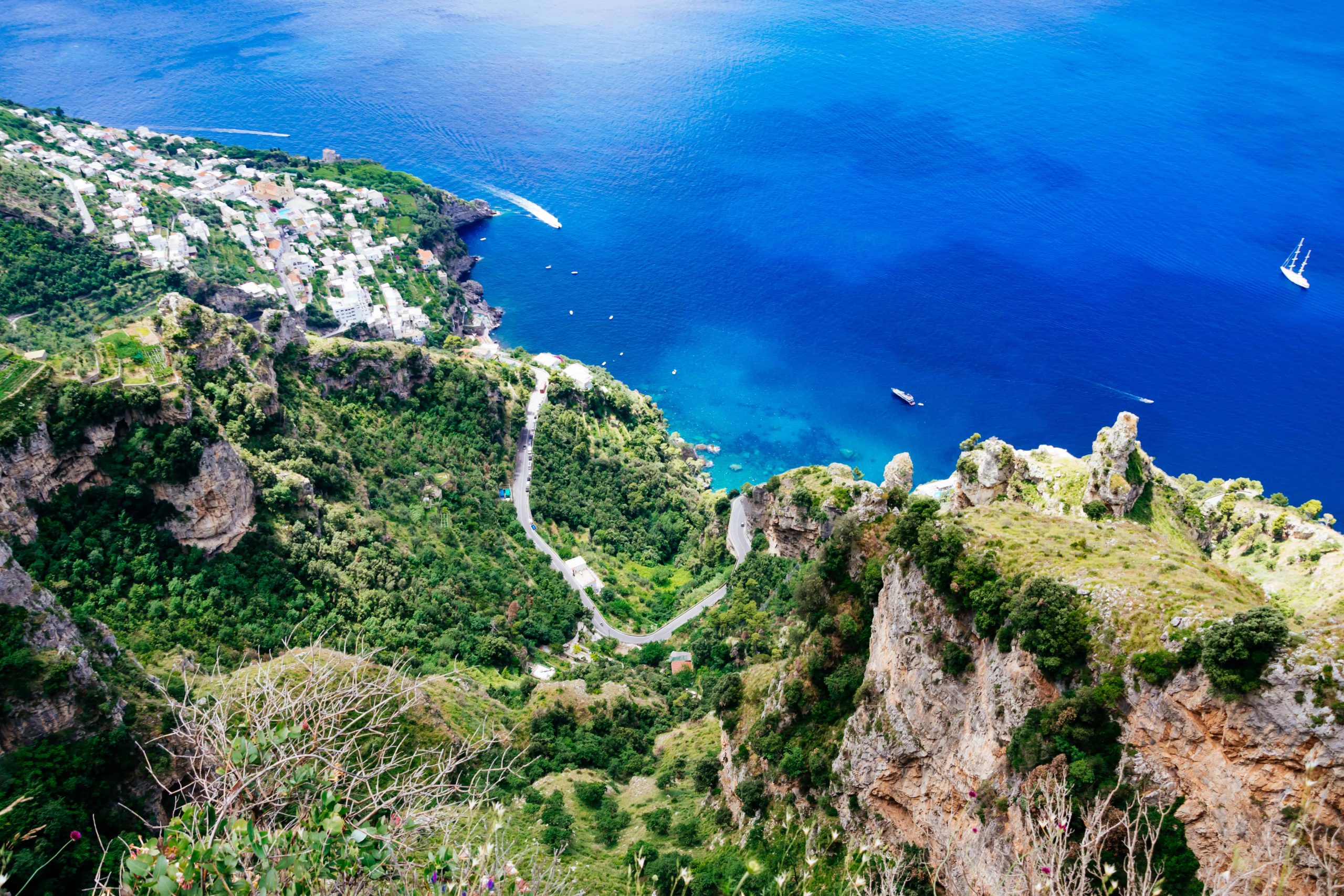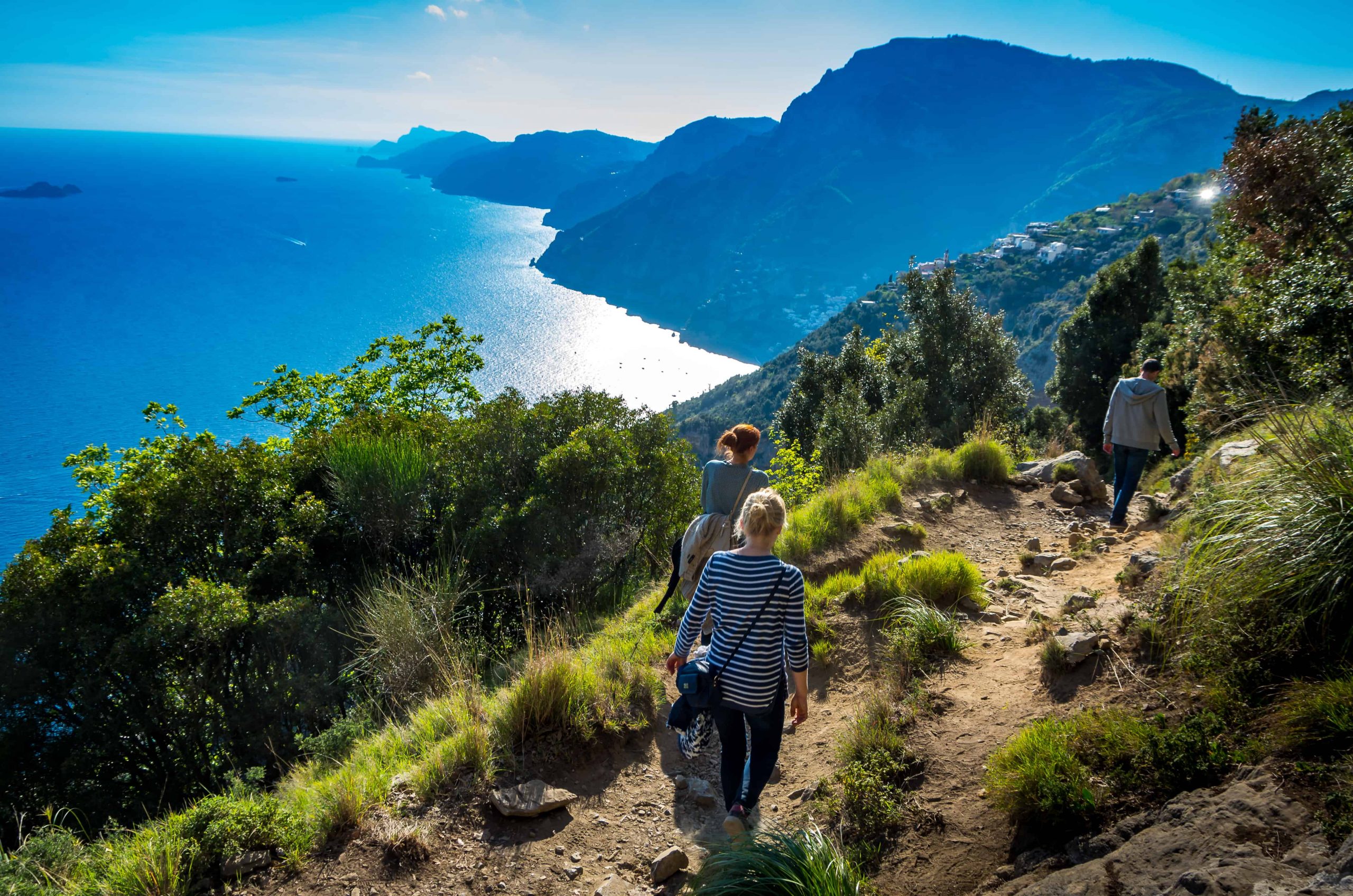The less-traveled side of the favorite Amalfi trail retraces the lives of ancestors.
September 28th, 2020.By Saveria Fiore
A taut tongue of stairs clings along the wooded hillside that leads from Positano up the placid Nocelle, the highest hamlet of the famous resort. This unassuming village has become a popular destination, holding one of the two extreme embassies of the famous Sentiero degli Dei (Path of the Gods).
The name, which is not accidental, recalls the legend that these mountains were plowed by those gods intent on rescuing Ulysses from the fatal song of the Sirens and that they thus shaped him with their footprints. The long staircase is, therefore, the starting point for the more daring hikers who want to undertake the Trail without taking advantage of the local bus that takes them from Positano to Nocelle.
There are about 1,700 steps of Vesuvian stone, well cut and then carried on the shoulders of local workers, who have gone to reassemble the pieces of this old dry-stone path, now worn out by time, weathering, and frequent ups and downs.

The gentle swirl of nature
The first row of stairs opens from the Strada Statale SS 163 road, in the area called Arienzo, and unravels in a lively zig zag, guarding between the corners of its steep climbs a pyramidal backdrop of Positano. A panorama framed by atavistic oak trees and shaded by the rosy clusters of bougainvillea.
In a conflicting alternation of shadow and light, lentisk shrubs fill the vegetation with tiny red berries, memories of oil produced in wartime. Here, too, the gods sigh with the voice of nature.
Myrtle, a plant sacred to Venus, floods the atmosphere with its spicy wake. In November, every local family that is solid in tradition makes liqueur at home from the purple, fleshy berries of the wild myrtle.
A wise example of tradition
Before the rolling road was built in 2001, this ramp was the usual crossing that locals made daily, even several times a day. They fed themselves on what they could get from the garden, sometimes bartering the goods of the land, for example, for the local catch. It is one of the reasons why residents often and willingly walked with the sporta (basket) on their shoulders, effectively making the path a commodity trading route.
Today such a path has lost its commercial value and is frequented by trekkers who want to immerse themselves in a centuries-old tradition, which still permeates every corner of this route. With every step, you can feel the dull thud of bare feet that once rested on the warm stone, and the scent of wet earth after a regenerating rain is reminiscent of raw nature: a somewhat forgotten one.

Between past and present
Under the aegis of the swampy shade of the ilex groves and the wild dancing rustle, young Pinuccia, daughter of the village salumiere, would go down at dawn to buy bread in Positano, in a grocery store, more commonly called palatone, named after a particular elongated bread shape.
Families were more supportive of each other. The need for survival was the common burden that made them necessary to each other. It was especially the case when heavy appliances, such as refrigerators, cookers, or sometimes pianos, had to be transported. In such cases, a few days in advance, families would agree among themselves and, step by step, carry it to its destination. The mule was the luxury of the well-to-do until the invention of the cable car in 1977, called o’ cav by the locals. And that year was the most wonderful Christmas for the Nocellese.
On December 24 at 3:45 p.m., the first load of goods was inaugurated, arriving in Positano within minutes. And at that instant, as everyone’s desire overflowed from their chests, the thought was for Gilio Cinque, the proponent of such an innovation. Although invented for material goods, the cable car was later used by people for some medical emergencies.
Those who come across this path today can still observe the remnants of the past and meet a few elderly ladies echoing the folk wisdom of the past. Tales of a still-living tradition that the landscape’s beauty and the gods’ subtle breathing still make present.
